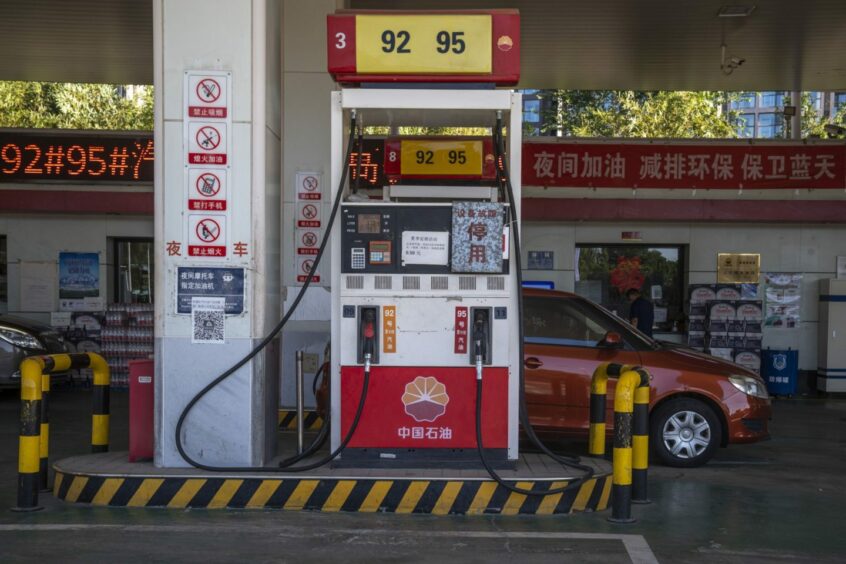
PetroChina posted its best-ever first-half earnings as the nation’s top oil and gas driller benefited from soaring global energy prices, and said that government stimulus is starting to lift Chinese oil demand.
The firm reported 82.39 billion yuan ($12 billion) in net income for the first half of the year, up 55% from the same period in 2021, according to an exchange filing on Thursday. Revenue rose 35% to 1.61 trillion yuan.
Global crude prices averaged $105 a barrel in the first six months, 62% higher than last year, providing a windfall to producers after several years of depressed prices. PetroChina has invested heavily in maintaining steady oil production while boosting gas output to match the country’s goal of tapping into cleaner fuels.
PetroChina’s smaller state-owned peer Cnooc Ltd. more than doubled its first-half profit to 71.9 billion yuan. Cnooc has more direct exposure to rising oil prices than PetroChina because it’s mostly focused on offshore drilling and doesn’t have massive refining and petrochemical factories. China Petroleum & Chemical Corp., Asia’s biggest refiner, completes the earnings reports for China’s big three oil companies on Sunday.
Drilling Profits
Improved drilling profits helped PetroChina weather the rising cost of imports, as well as weaker demand for fuel as pandemic lockdowns sap industrial activity. China’s leaders have recently tempered expectations of meeting yearly economic growth targets, creating headwinds for domestic energy suppliers.
However, the government’s efforts to buttress the economy are starting to bear fruit, Chairman Dai Houliang told an earnings briefing. “The package of stimulus policies to stabilise the economy has delivered good results and China’s oil demand is recovering,” he said.
In that vein, executives told the briefing they expect refined oil product demand to rise 1.6% on year to 180 million tons, while gas consumption should increase 5.5%.
PetroChina has also said it plans to speed up its transition to lower-carbon fuels, aiming to increase gas and renewable production to match oil by 2035, and shifting half of its output to hydrogen, geothermal and clean power by 2050.
Clean Energy
President Huang Yong Zhang told the briefing that the company is accelerating its renewable and geothermal projects, and has made breakthroughs in its development of carbon capture technologies. PetroChina also said it obtained more quotas than expected to build clean energy projects in the first half, and that connections to the grid should reach 20 gigawatts for the full year.
Among other key metrics, the government’s call to ramp up domestic production at all costs to counter energy shortages pushed PetroChina to raise total output to 845 million barrels of oil equivalent, up 3.1% from a year earlier. The firm’s capital expenditure rose 25% to 92.31 billion yuan, with spending for the whole year set to hit 242 billion yuan, mainly to increase upstream production.
But the company struck a cautious note in its outlook, saying the world economy faces risks from inflation, interest rate increases and geopolitical tensions in the second half of the year.
Recommended for you
